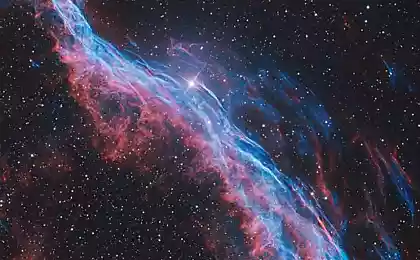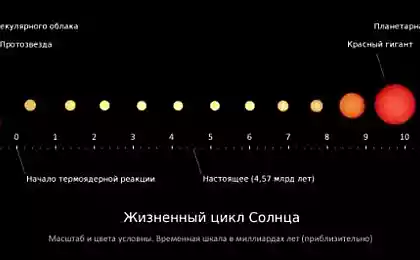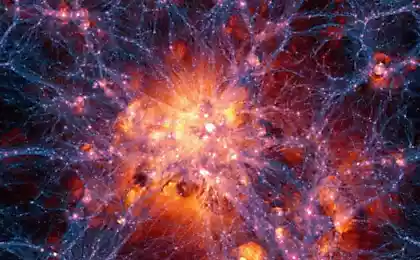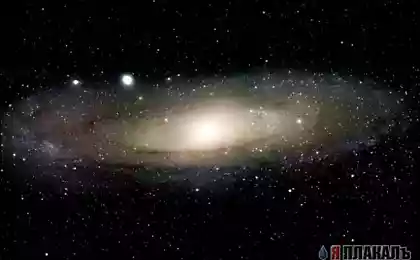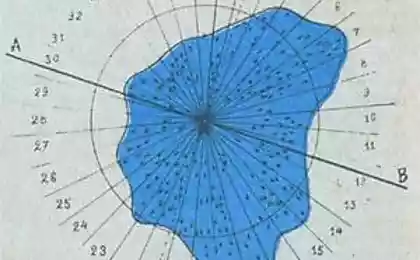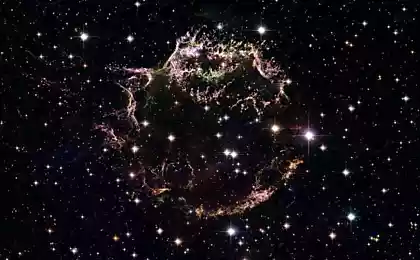701
A supernova explosion
Perhaps in the near future, all the inhabitants of planet Earth will witness a very rare event, occurring every few thousand years. According to insiders from the Mauna Kea Observatory, Hawaii, a red giant Betelgeuse is rapidly changing shape. Over the past 16 years the star has lost a round shape, rapidly shrinking at the poles, while the star's equator still held due to the centrifugal force. It is clear evidence that only a matter of weeks or months prior to the conversion of the star in a supernova.
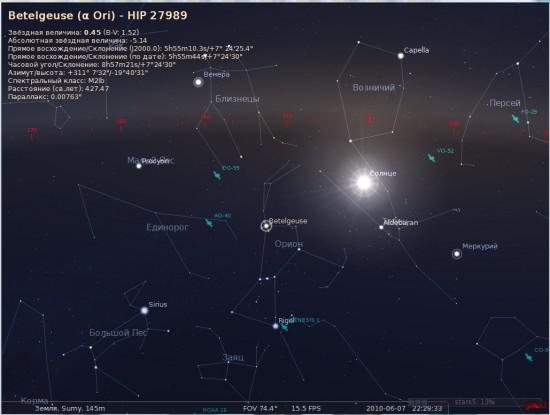
Betelgeuse is also known as Orion - one of the brightest stars of the familiar constellation of Orion ("Hunter"). Like the names of many stars, Betelgeuse is Arabic in origin. The name comes from the phrase "shoulder (or armpit) Hunter" - a place that takes the star of the constellation Orion in the figures. Since Betelgeuse is a massive red supergiant, it is nearing the end of her life, and soon it will explode as a supernova.
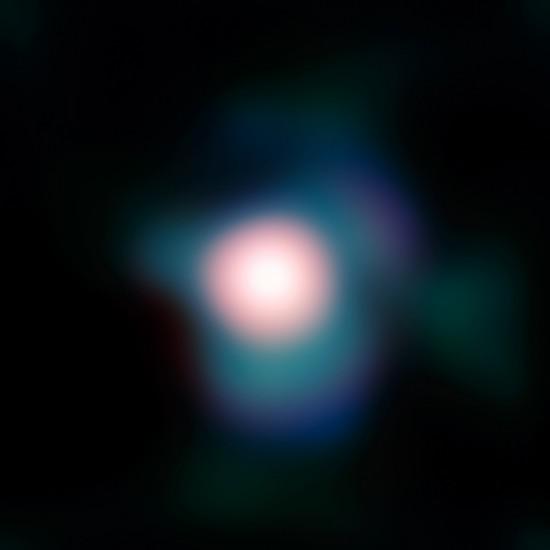

This image of Betelgeuse, the best quality of all that was possible to do.
Betelgeuse - a red supergiant, remote from us 600 light years. The surface of Betelgeuse is cooler than the sun's surface, and its size - 1,000 times more. If you put the star at the center of the solar system, it will fill the space within the orbit of Jupiter. The picture shows a bright incomprehensible hot spot on the surface of the star.

How will this rare event from the ground? Suddenly, the sky will flash very bright star. "It is very bright" - means the degree of brightness, as well as at least the full moon, as a maximum - full sun. Like space show last about six weeks, which means a half months, "White Nights" in certain parts of the world, other people will enjoy two or three additional hours of daylight and breathtaking spectacle of an exploding star by night.
After two or three weeks after the explosion, the star begins to fade, and after a few years - will finally turn to the terrestrial observer in the nebula type Crab.
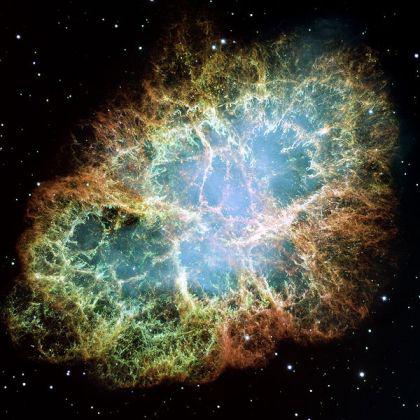
But the waves of charged particles after the explosion will reach Earth via several centuries, and the inhabitants of the earth will have a small (4-5 orders of magnitude less lethal) dose of ionizing radiation. But do not worry in any way - as the scientists say, the threat to the Earth and its inhabitants do not have, but such an event in itself is unique - the latest evidence observations of a supernova explosion on Earth dates back to 1054 year.
History of the name
The word "Betelgeuse" - Arabic origin. The history of its origin is not completely clear, but experts agree that the second part of the word "elgeyze" comes from the Arabic "al-jawza» (الجوزاء), it is so called in ancient times all the constellation of Orion, the name carried the heroine of one of the ancient Arabian Nights.
The root of "DZHZ" in "jawza" means "in the middle", thus "jawza" can be translated as "central". Later, the word "al-jawza" was used by Arab astronomers for single designation of the constellations Orion and Gemini. Even now, when Orion in Arabic is called "Al Jabbar" (Giant), the old name may continue to be used.
The most common explanation is a version of the full name of an incorrect translation from Arabic into Latin word "poison al jawza" (hand Jawzi al), that is the name of the constellation Orion. Europeans have mixed Arabic letters Y and B, making Yad-al-Jauza in Bait-al-Jauza (Jawzi house) or even in the Bat-al-Jauza (armpit Jawzi). So there was a word which gave us today Betelgeuse Betelgeuse.
Thus, it turns out that the most common interpretation of the name "hand twin" is not quite true. The right thing would be to translate the title as "the hand of the fact that in the middle" or "hand of the central».
Also interesting is the ancient Chinese version of the name Betelgeuse. In Chinese, it looks 参 宿 四 and sounds like "Shen Xue-si." So it is not the Chinese do not chenshe as "fourth star in the constellation of three stars." Such a paradoxical name is derived from the fact that the original Chinese astronomy was a "constellation of three stars", that is the belt of Orion, but eventually he was treated a few nearby stars, but the name has remained the same for the constellation ...
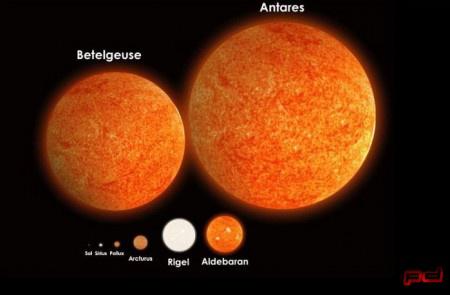
Source:

Betelgeuse is also known as Orion - one of the brightest stars of the familiar constellation of Orion ("Hunter"). Like the names of many stars, Betelgeuse is Arabic in origin. The name comes from the phrase "shoulder (or armpit) Hunter" - a place that takes the star of the constellation Orion in the figures. Since Betelgeuse is a massive red supergiant, it is nearing the end of her life, and soon it will explode as a supernova.


This image of Betelgeuse, the best quality of all that was possible to do.
Betelgeuse - a red supergiant, remote from us 600 light years. The surface of Betelgeuse is cooler than the sun's surface, and its size - 1,000 times more. If you put the star at the center of the solar system, it will fill the space within the orbit of Jupiter. The picture shows a bright incomprehensible hot spot on the surface of the star.

How will this rare event from the ground? Suddenly, the sky will flash very bright star. "It is very bright" - means the degree of brightness, as well as at least the full moon, as a maximum - full sun. Like space show last about six weeks, which means a half months, "White Nights" in certain parts of the world, other people will enjoy two or three additional hours of daylight and breathtaking spectacle of an exploding star by night.
After two or three weeks after the explosion, the star begins to fade, and after a few years - will finally turn to the terrestrial observer in the nebula type Crab.

But the waves of charged particles after the explosion will reach Earth via several centuries, and the inhabitants of the earth will have a small (4-5 orders of magnitude less lethal) dose of ionizing radiation. But do not worry in any way - as the scientists say, the threat to the Earth and its inhabitants do not have, but such an event in itself is unique - the latest evidence observations of a supernova explosion on Earth dates back to 1054 year.
History of the name
The word "Betelgeuse" - Arabic origin. The history of its origin is not completely clear, but experts agree that the second part of the word "elgeyze" comes from the Arabic "al-jawza» (الجوزاء), it is so called in ancient times all the constellation of Orion, the name carried the heroine of one of the ancient Arabian Nights.
The root of "DZHZ" in "jawza" means "in the middle", thus "jawza" can be translated as "central". Later, the word "al-jawza" was used by Arab astronomers for single designation of the constellations Orion and Gemini. Even now, when Orion in Arabic is called "Al Jabbar" (Giant), the old name may continue to be used.
The most common explanation is a version of the full name of an incorrect translation from Arabic into Latin word "poison al jawza" (hand Jawzi al), that is the name of the constellation Orion. Europeans have mixed Arabic letters Y and B, making Yad-al-Jauza in Bait-al-Jauza (Jawzi house) or even in the Bat-al-Jauza (armpit Jawzi). So there was a word which gave us today Betelgeuse Betelgeuse.
Thus, it turns out that the most common interpretation of the name "hand twin" is not quite true. The right thing would be to translate the title as "the hand of the fact that in the middle" or "hand of the central».
Also interesting is the ancient Chinese version of the name Betelgeuse. In Chinese, it looks 参 宿 四 and sounds like "Shen Xue-si." So it is not the Chinese do not chenshe as "fourth star in the constellation of three stars." Such a paradoxical name is derived from the fact that the original Chinese astronomy was a "constellation of three stars", that is the belt of Orion, but eventually he was treated a few nearby stars, but the name has remained the same for the constellation ...

Source:

